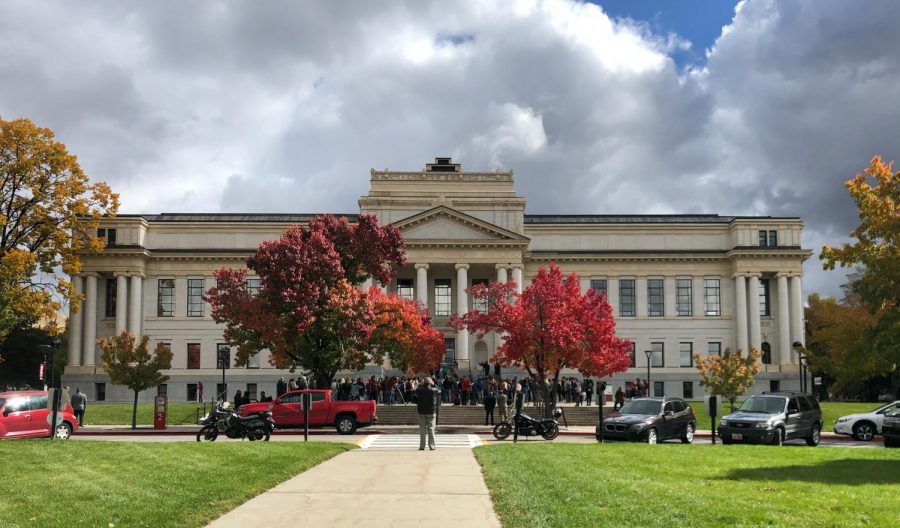Barron: Student Input Is Essential to Create a Truly ‘Safe U’
“Utah schools need to remain safe, and hopefully, it will inspire the rest of the country to follow.” (Photo by Victoria Hills | The Daily Utah Chronicle)
October 31, 2019
When I moved into Officers Circle this August, there was a sign taped to the front door of my house with big bold letters reading, “For your safety security cameras are being installed to monitor entry points.” The sign detailed the logistics of who would be doing the installation and when it would happen, but it never said where the cameras would be located. It was reasonably assumed by residents, and confirmed by the resident director that the cameras would be located on the exterior of the building to protect the privacy of tenants. This would make sense, especially as Officers Circle is composed of historical homes that create a living arrangement more intimate than a traditional dormitory.
Much to our surprise, the cameras were instead placed inside the houses — the front entry, dining room, study room, laundry room and even in an area where some residents access their closets. The resident outcry was immediate and the controversy was quickly picked up by local news. In response, Housing and Residential Education invited any concerned student to attend a town hall to discuss the cameras, and more specifically, what they are capturing and where the recordings go.
Despite dozens of signatures on a petition demanding the removal of the cameras, attendance at the town hall was sparse. Perhaps this was because we all assumed the conversation was a formality. With $1 million already invested, no amount of complaining, arguing or petition signing would take the cameras away. This town hall was an opportunity for HRE to cover its bases, and to claim to be responsive to students, even though the concern about the cameras is unlikely to be addressed. When Barb Remsburg, the director of HRE, was asked how residents can hold HRE accountable for the promises made during the town hall, she replied that students need to “have faith.” While the cameras in Officers Circle only impact 120 of over 30,000 students at the University of Utah, it is indicative of the larger issue of the U’s leadership ignoring student input on the issue of campus safety.
While the U claims its campus is safer than ever, I do not feel any safer. It has been a year since Lauren McCluskey was shot and killed on campus after repeatedly contacting campus police about repeated harassment from a former boyfriend. As the U has refused to take responsibility for the “multiple missteps” of campus police, I worry that if I am threatened or assaulted on campus, my report will be mishandled or not taken seriously. These fears have since been validated by the University’s motion to dismiss the McCluskey lawsuit under the grounds that “There is no clearly established constitutional requirement that a University protect its students from sexual harassment perpetrated by visitors to campus who are not under University control.”
In response to this court document, the ASUU Assembly voted in support of a resolution rebuking the U. This was the first time the student government organization has ever made such a formal critique of University leadership, but it was necessary as “students are angry,” and this resolution elevated student concerns about university accountability to the attention of the administration. The U’s General Counsel dismissed these student leaders, claiming the university does feel responsible for student safety and challenged students to read the motion for themselves. I did read the full document, and I am lead to agree with the assessment from the Salt Lake Tribune that the U believes its “officers had no obligation to protect McCluskey from her attacker.” Refusing to acknowledge how the language in this court document affects the culture of campus safety is shortsighted and irresponsible.
The unaccountability of the U has affected the safety of other students. Stories of inept and insensitive police officers and University officials have been shared by students on the @Unsafe.U Instagram page. Even as students are currently excluded from decisions on campus safety, the University’s SafeU program is not addressing any of the issues being raised on social media.
Any engineering or business student at the U could tell President Ruth Watkins that focus groups comprised of target customers need to be involved in every phase of design, implementation and refinement for a product or campaign to be effective. If the university wants to protect students and making decisions that help — not harm — the administration needs to treat students as partners in this goal and allow their input to shape University policy on safety.








